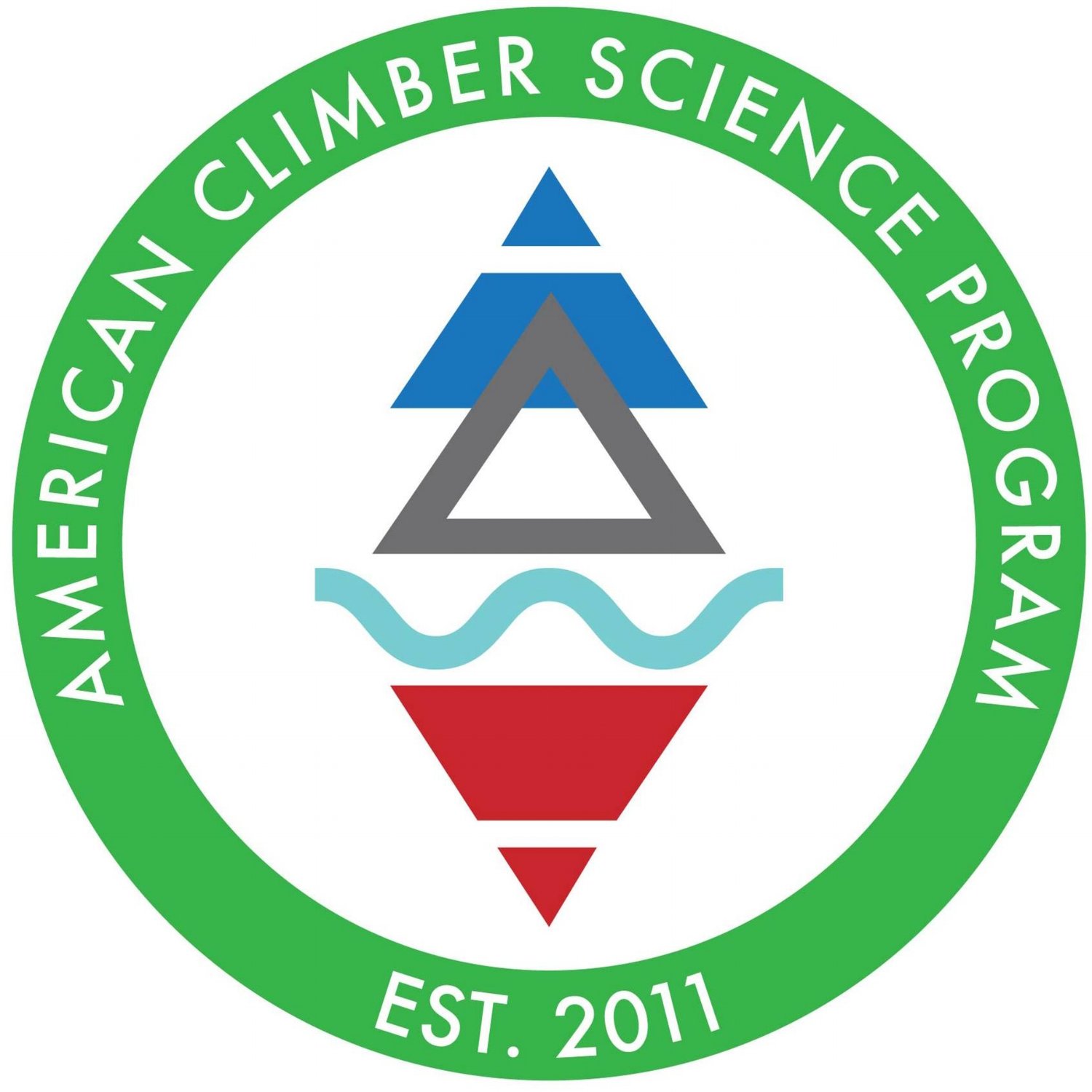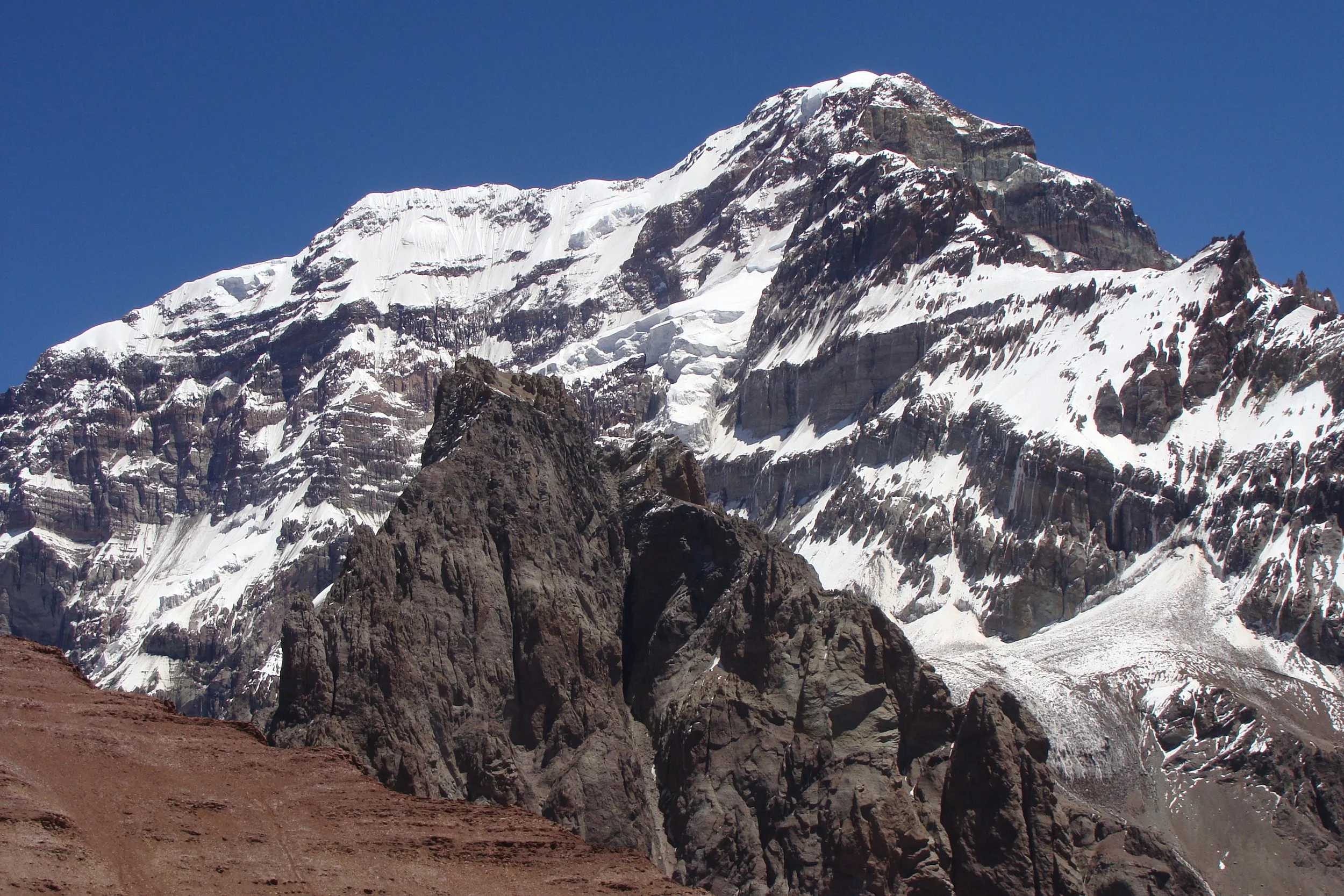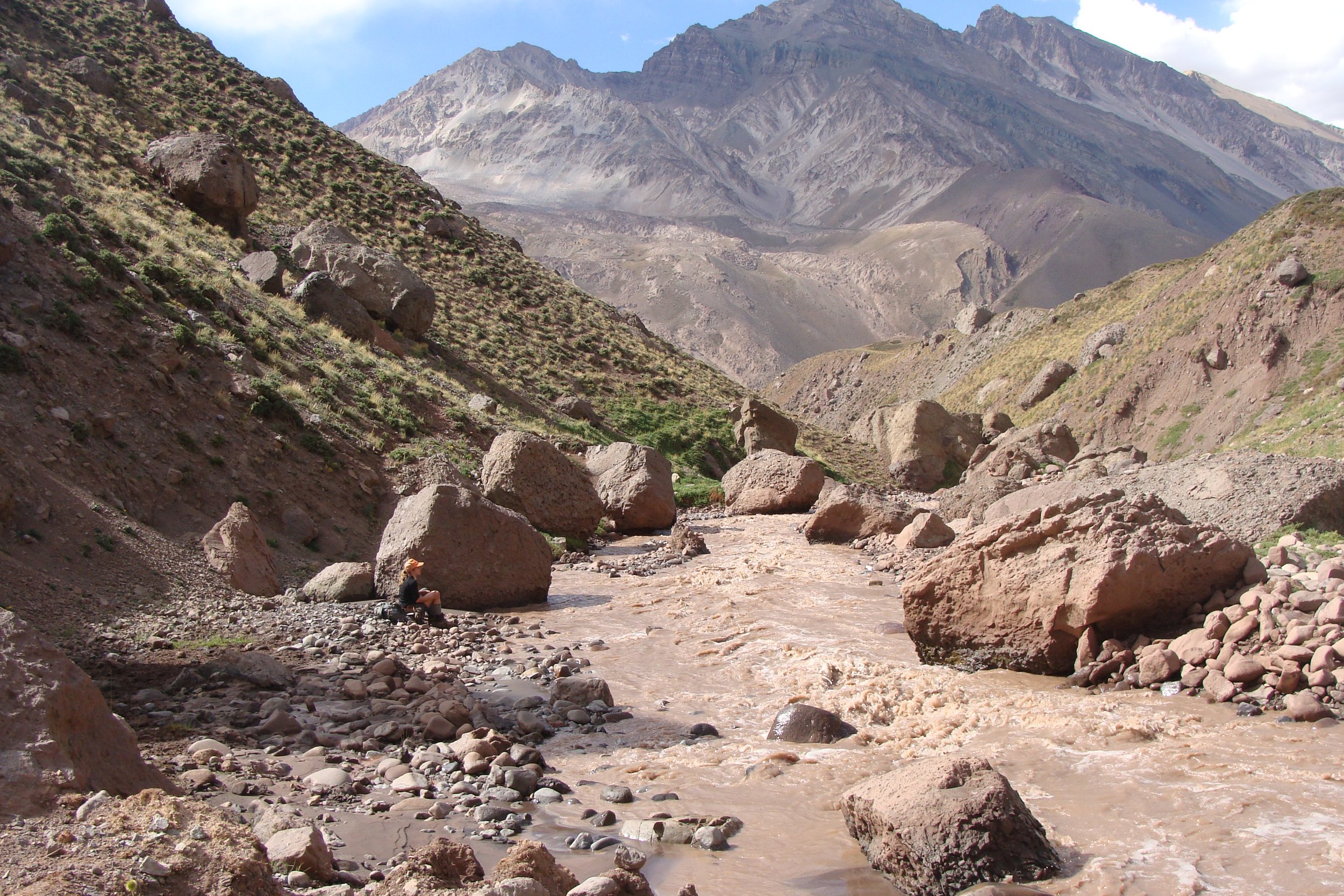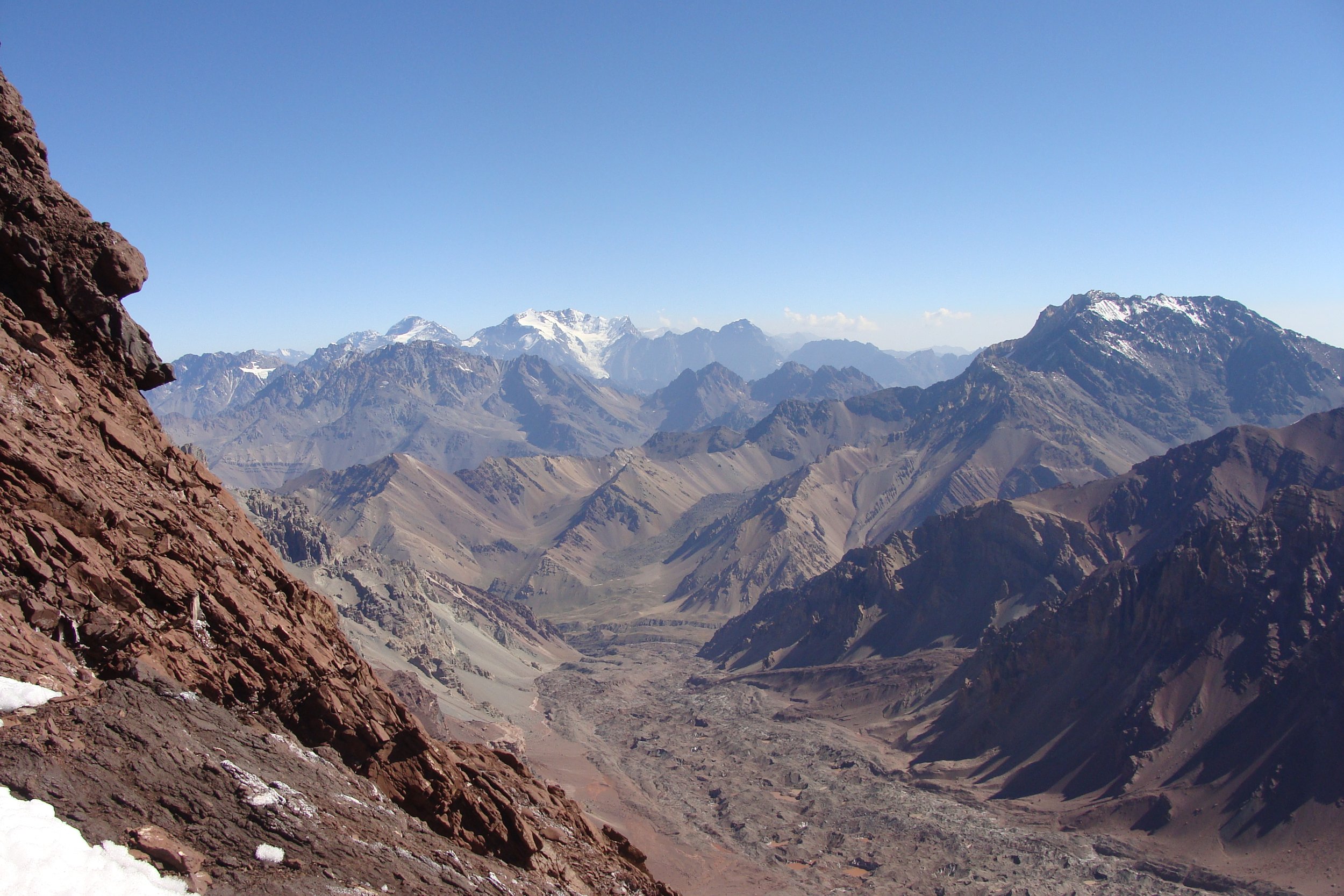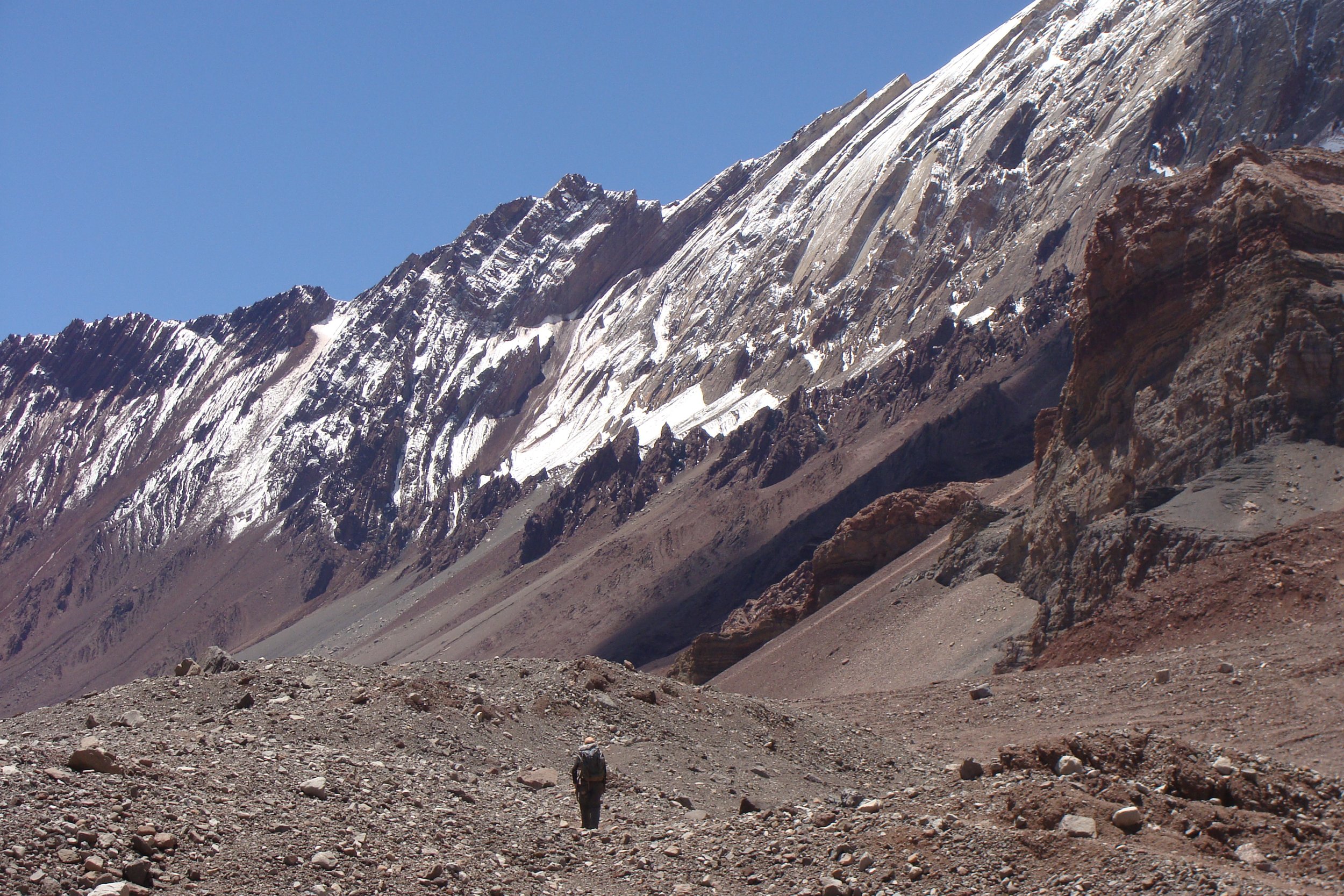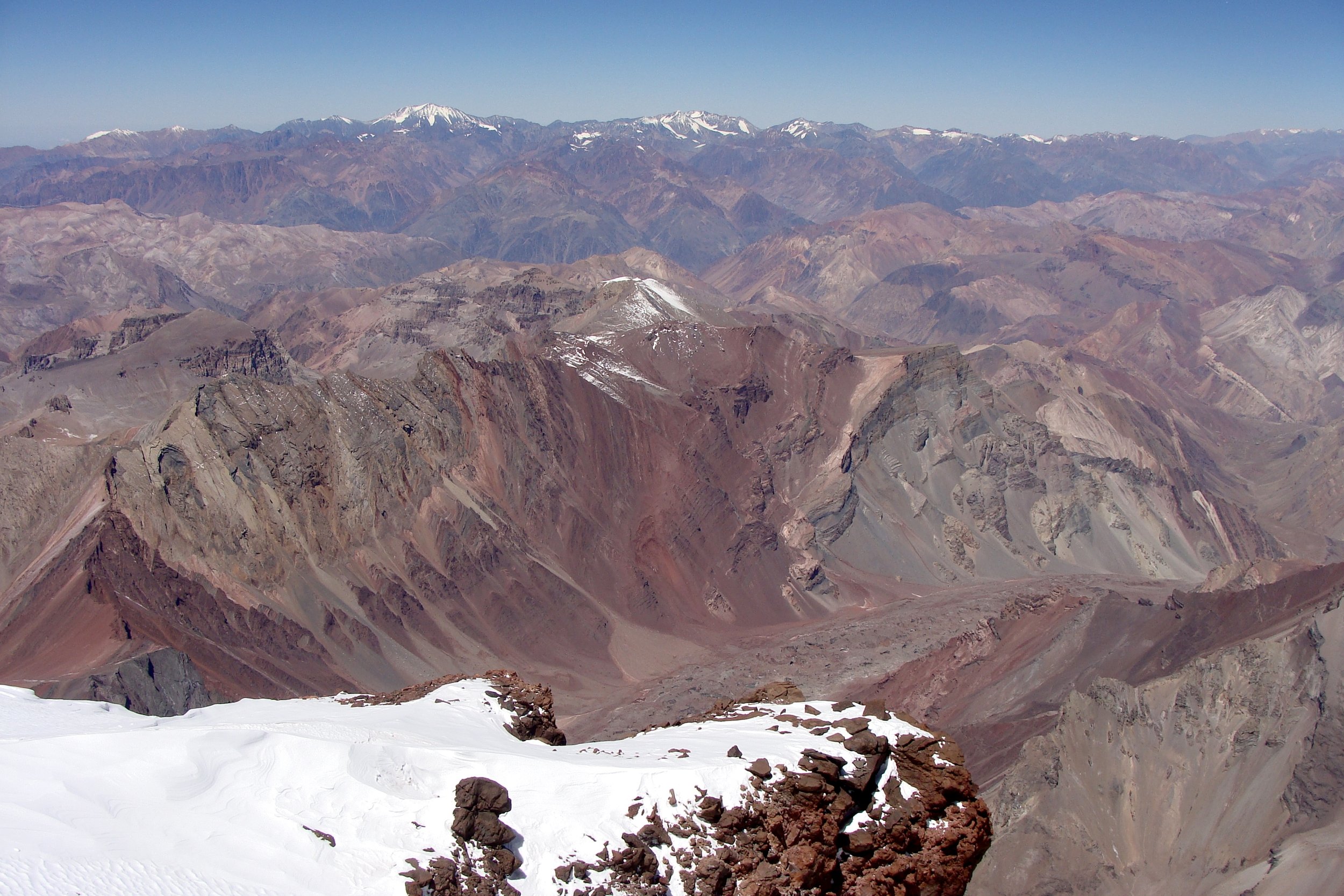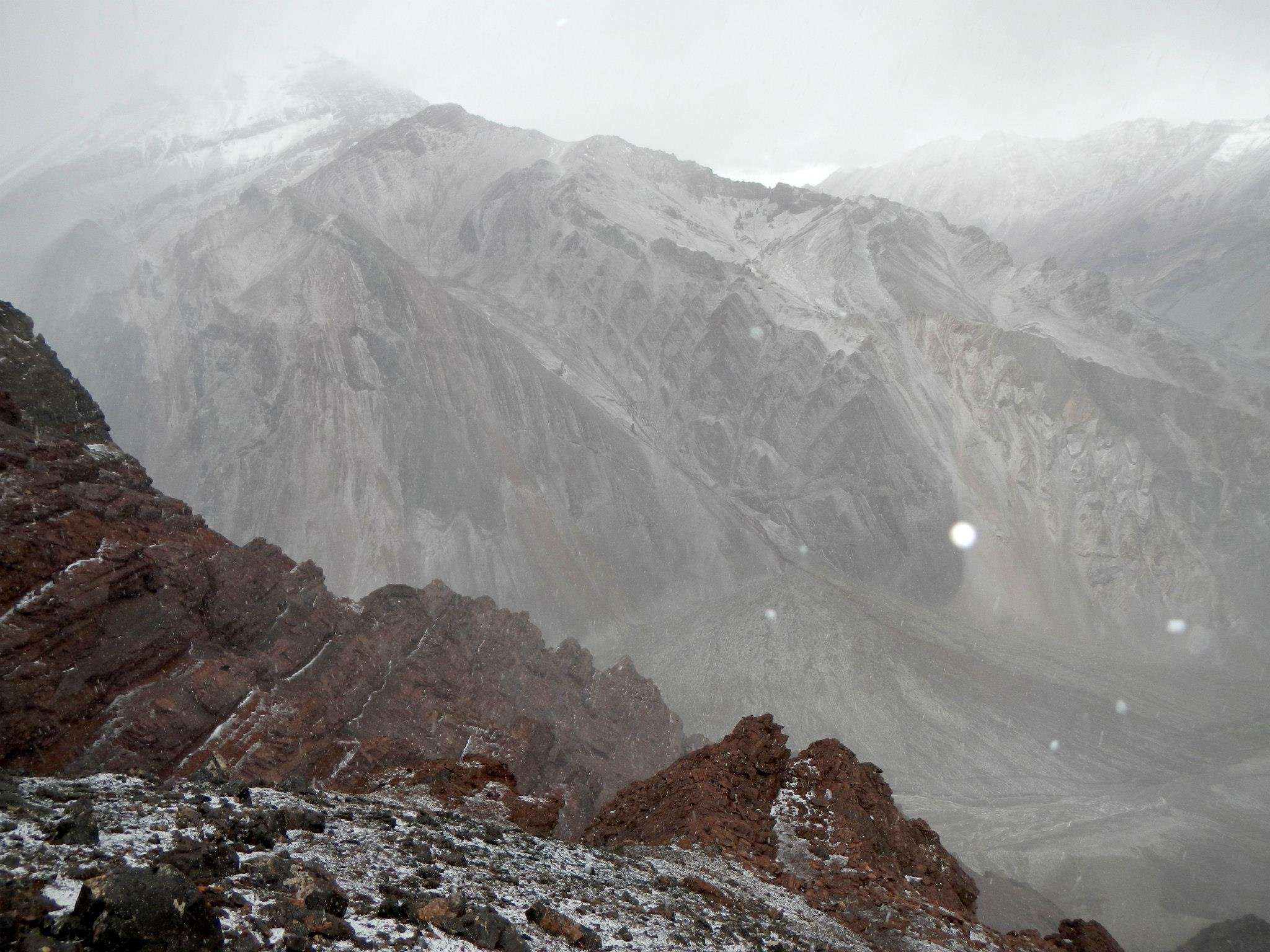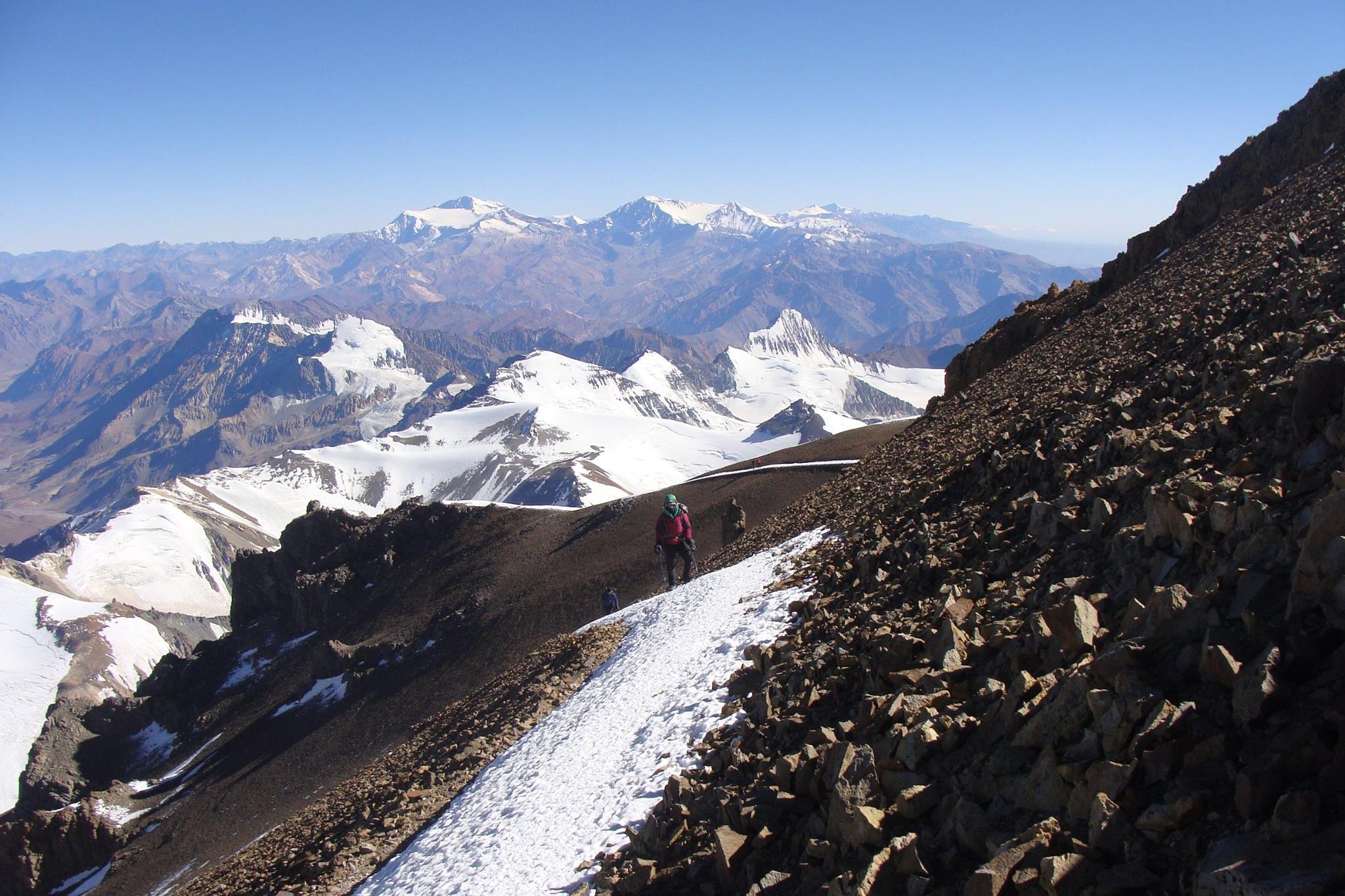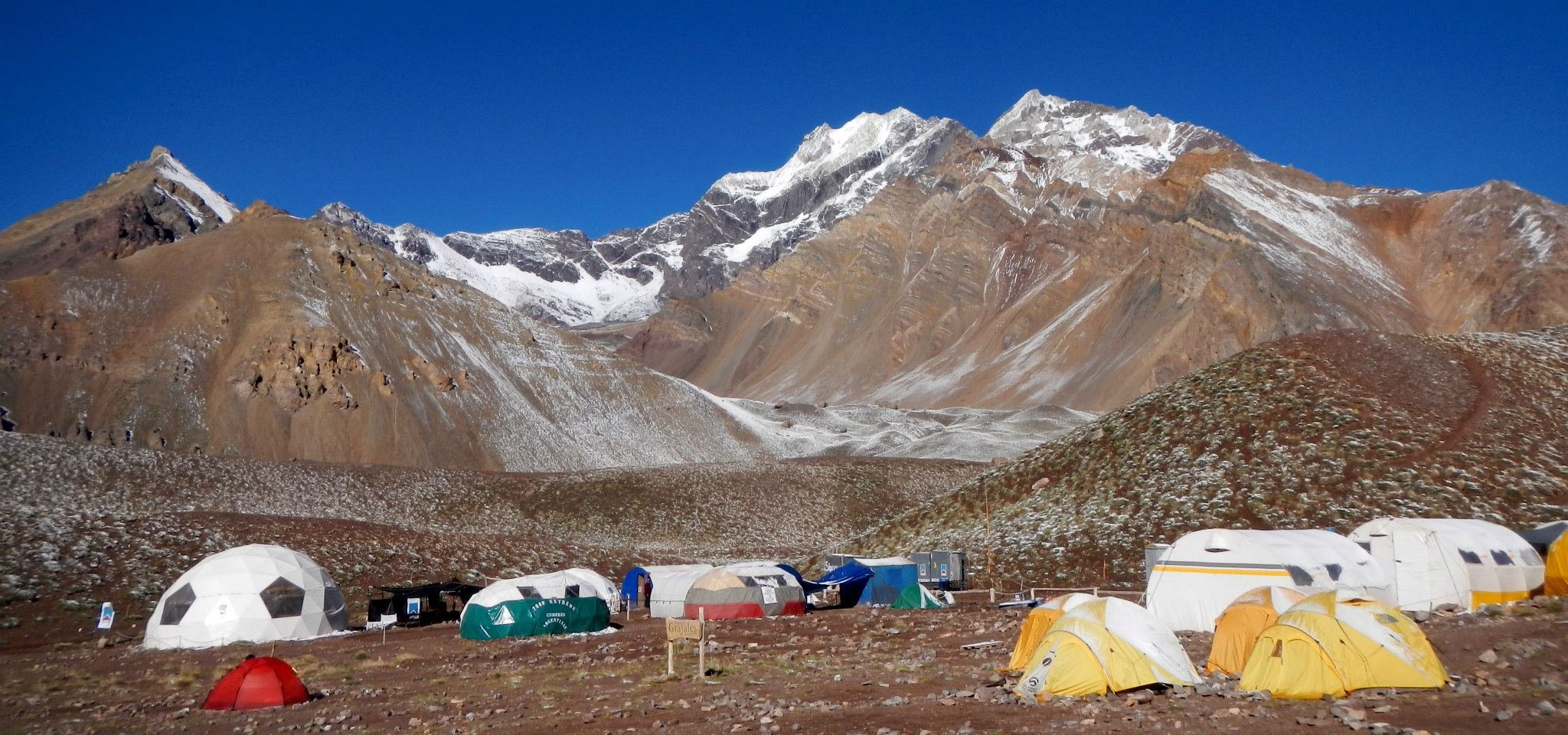Aconcagua - Summit of South America Expedition 2023/24
COVID has meant that the Climber Science Program has had to adapt and we are trying to continue our long-term work while expanding the scope of where we work. During the Christmas/New Year’s period of 2023/24, we will sample rock and ice on the tallest mountain in the Western Hemisphere Cerro Aconcagua (6,961 metres (22,838 ft)).
Projects: a) Particulate Deposition on Southern Andean Glaciers. The ACSP has gathered a great deal of data from the Central Andes and we will continue our snow and ice sampling work on this more southern Andean peak to understand how air pollution and dust deposition increase the rate at which glaciers melt locally - and thus threaten the downstream users of this water over the long-term. Additionally, from our mineral sampling in Peru we’ve learned that some types minerals deposited can only be coming from long distance transport from China - and we will see if this long-distance transport is occurring in the Southern Andes as well.
b) Andean Uplift Rates and Age of the Andean Mountains. Dr. Elizabeth Balgord studied Andean uplift on Aconcagua during her dissertation a decade ago and will focus on the volcanic/intrusive units and try and figure out which ones are actually Cretaceous and which ones are younger. The goal by revisiting this area, she can continuing the structural and stratigraphic work we've been doing in the Central Andes, focused on what is happening between the latest Cretaceous and Miocene. This expedition will involve carry a large number of rock samples off of the mountain and will be one of our more strenuous yet!
